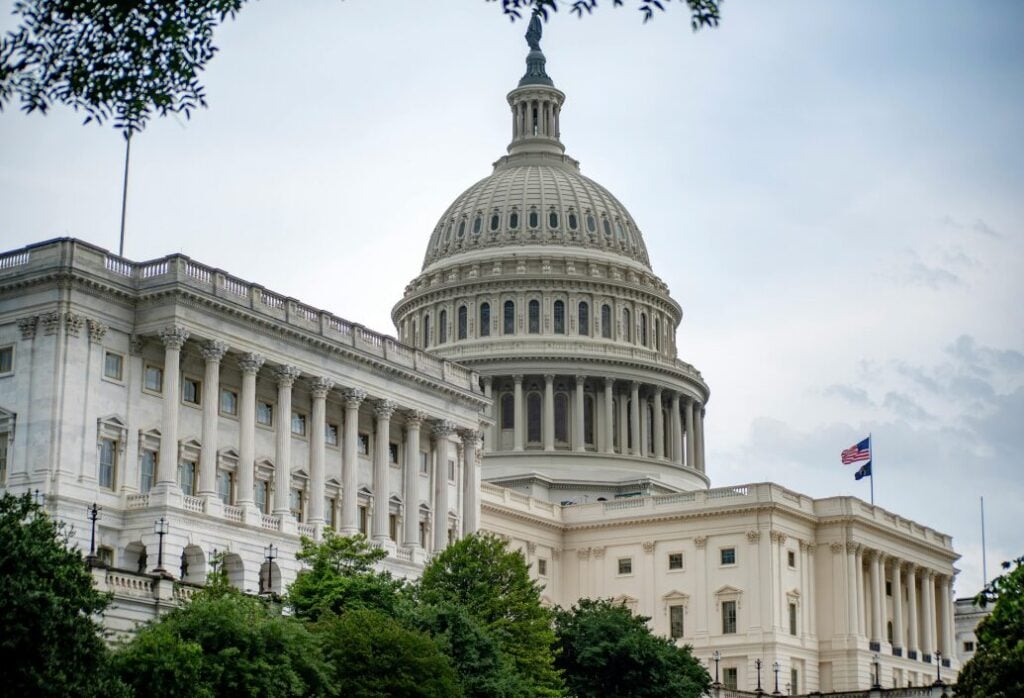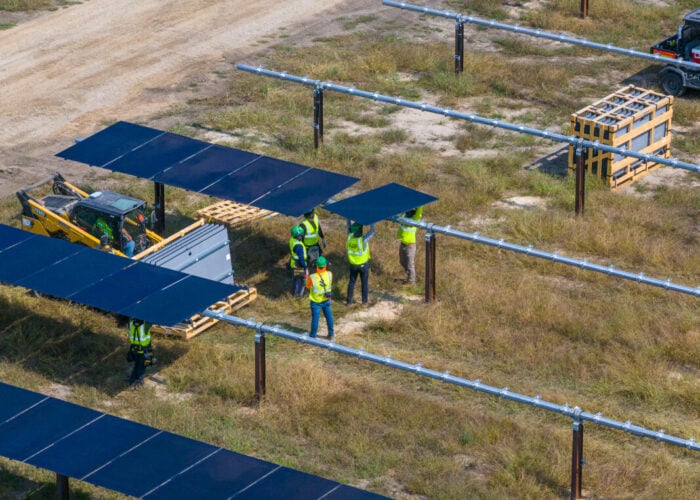
The second half of 2025 is well underway and has seen a flurry of developments for the solar industry in the US, both in terms of policy and tariffs that will undoubtedly affect the manufacturing industry, either directly or indirectly.
Most prominent of them all is the passing of the “One Big, Beautiful Bill” on Independence Day, 04 July 2025. Although the manufacturing tax credits (under Section 45X) are not being sunset, manufacturing could still be affected by other tax credits ending earlier than initially intended.
Try Premium for just $1
- Full premium access for the first month at only $1
- Converts to an annual rate after 30 days unless cancelled
- Cancel anytime during the trial period
Premium Benefits
- Expert industry analysis and interviews
- Digital access to PV Tech Power journal
- Exclusive event discounts
Or get the full Premium subscription right away
Or continue reading this article for free
Among these are the phase-out at the end of the year for the residential tax credits under Section 25D and more broadly the investment tax credits (ITC) and production tax credits (PTC) for which projects will be required to begin construction in the coming months if they aim to retain the “beginning of construction” as a safe harbour.
This, in particular, is expected to spark a rush among solar developers to start construction on their projects in the coming months, as two deadlines have been set to secure the ITC and/or PTC tax credits. Projects that begin construction before 4 July 2026 will be eligible for these, and they can be commissioned in the coming years. Otherwise, those starting construction after that date will be required to be operational by the end of 2027.
However, it remains to be seen what will be considered as “beginning of construction” given that only days after the signing of the OBBB, US president Donald Trump signed an executive order requesting the Secretary of the Treasury to come up with new guidance under the Internal Revenue Service (IRS) regarding the tax credits for renewables.
It should be a matter of days before that new guidance from the IRS is released (the deadline was set to 18 August 2025), giving more clarity as to what constitutes “safe harbour” on a project’s construction and whether this will drive a rush in solar cell and/or module procurement in the next 11 months to reach the deadline of 04 July 2026.
Only a few weeks later after the executive order, the US Department of Commerce (DoC) initiated an investigation, under Section 232 of the Trade Expansion Act of 1962, into the imports of polysilicon and its derivatives.
This investigation seeks to determine the effects of polysilicon imports in the US, how they affect domestic production, and the role of foreign supply chains in meeting domestic demand. At the moment, the US does not produce enough annual nameplate capacity to cover the domestic module nameplate, as shown in the chart below.
More recently, the DoC initiated antidumping duty (AD) and countervailing duty (CVD) investigations of crystalline silicon PV cells, whether or not assembled into modules, from India, Indonesia and Laos. The investigation comes less than a month after a petition was filed.
It won’t take long before a preliminary determination is expected to be released by the US International Trade Commission (ITC). The date was set for 02 September 2025. If the ITC preliminary determination ends up being affirmative, then Commerce is scheduled to release its preliminary decision on 13 October 2025 and 26 December 2025 for the CVD and AD investigation, respectively.
And despite the many policy and tariff changes that have happened since the OBBB was signed into law, it hasn’t put a stop to domestic solar manufacturing. Weeks after the bill was passed, materials science firm Corning acquired Chinese solar manufacturer JA Solar’s module assembly plant in Arizona. A plant with a 2GW annual nameplate capacity and that will solidify the company’s position in the US after it unveiled last year the construction of a solar wafer plant in Michigan. More recently, SEG Solar shipped its first order of utility-scale solar modules produced at its Texas module assembly plant.
The PV CellTech Conference USA in San Francisco will cover these topics on 7-8 October 2025. The conference will bring together experts from the manufacturing industry, policymakers and supply-chain leaders and PV Tech readers can save 20% on tickets with code PVTECH20.
Since the passing of the Inflation Reduction Act in August 2022, the industry has increased its solar module annual nameplate capacity by nearly ninefold. In 2022, the US had only 6.4GW of annual module capacity, and earlier this year, it reached 50GW and is set to end at nearly 56GW. Available domestic module capacity has grown so fast in the last few years that it has outpaced the domestic nameplate capacity of polysilicon.
Solar cells have come even further back with the return of domestic solar cell manufacturing in 2024 after more than four years without any solar cells being processed in the US. By the end of the year, PV Tech’s Market Research forecasts nearly 7.5GW of annual nameplate capacity for solar cells, while the first gigawatt of US-made wafers will begin operations.
Abigail Ross Hopper, president and CEO of trade association the Solar Energy Industries Association (SEIA), recently told PV Tech: “Americans will still demand energy choices, and the solar and storage industry will continue to deliver them.”
As things start to settle and the future becomes clearer, there is no better moment to learn and discuss the landscape of the domestic solar manufacturing industry this October in San Francisco during the PV CellTech Conference. Check the agenda and how to register for the event here (remember to use code PVTECH20 to save 20% on your ticket).






